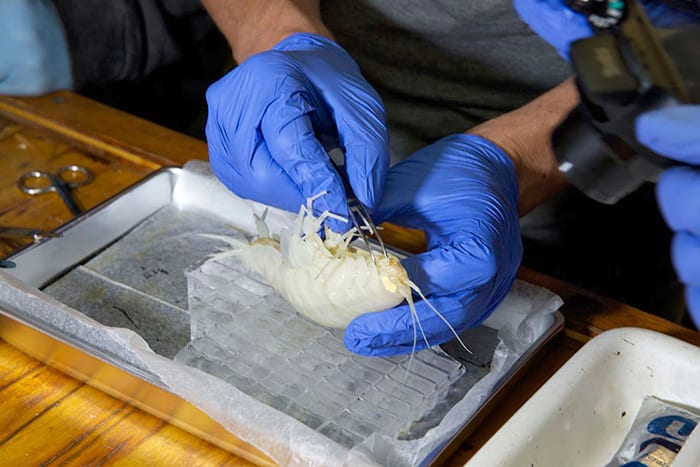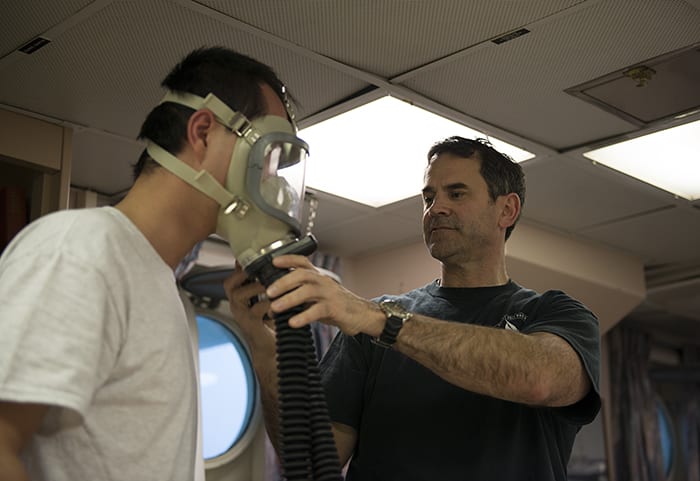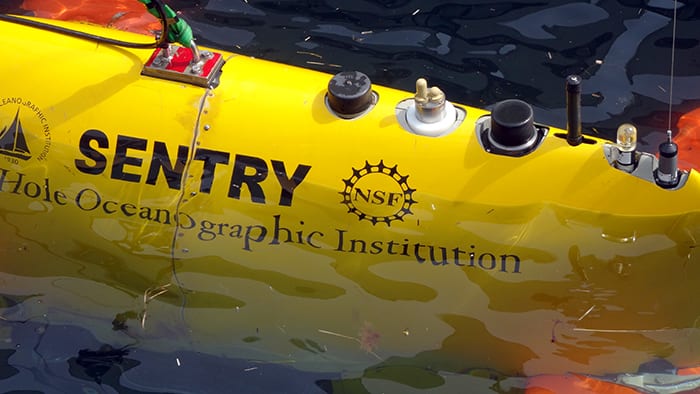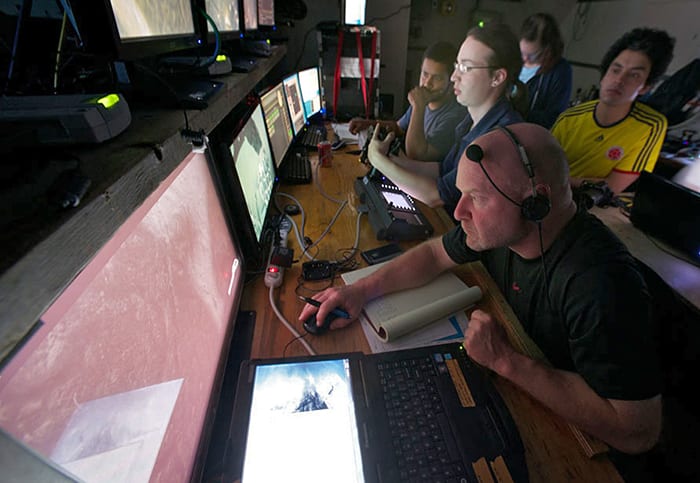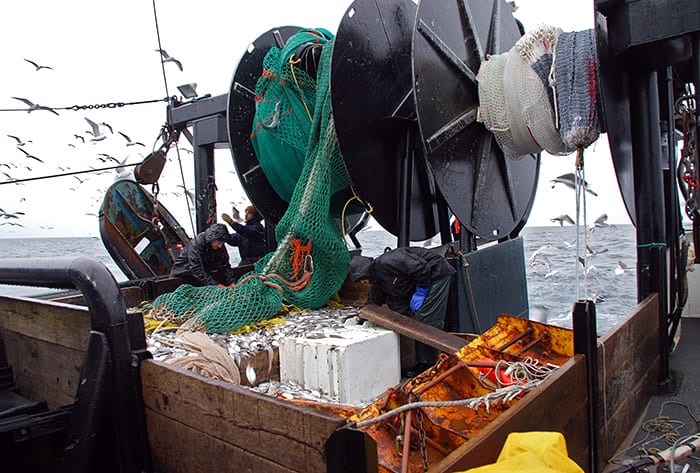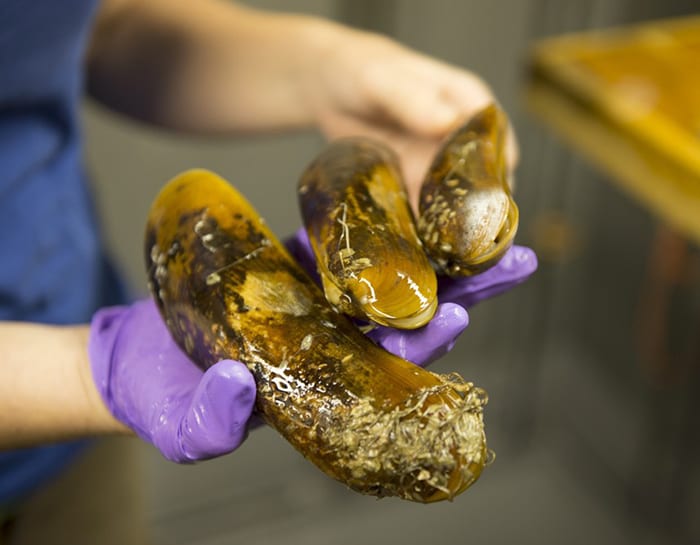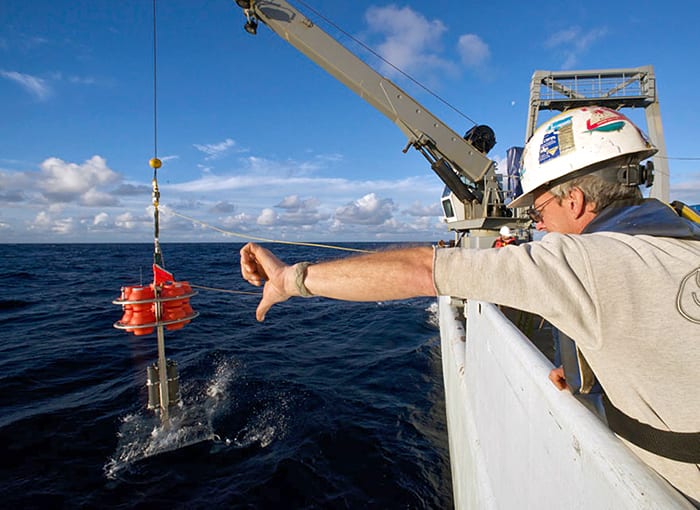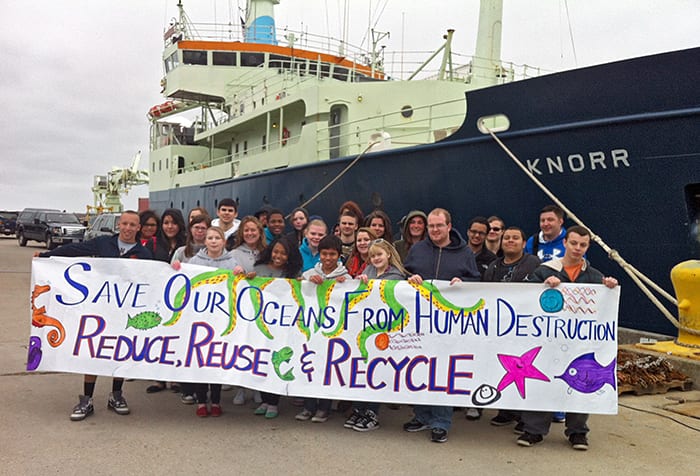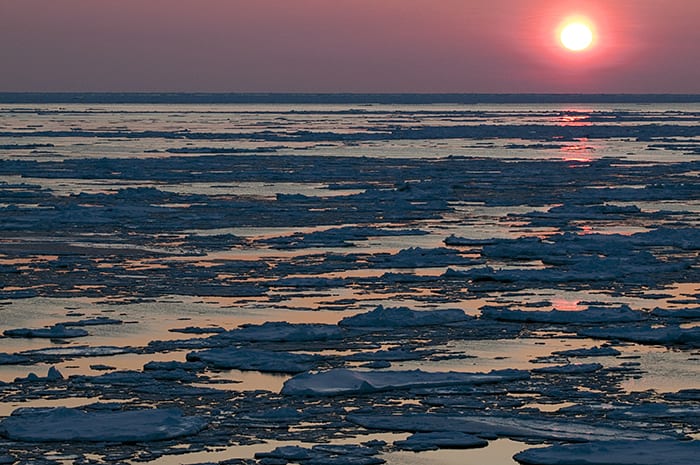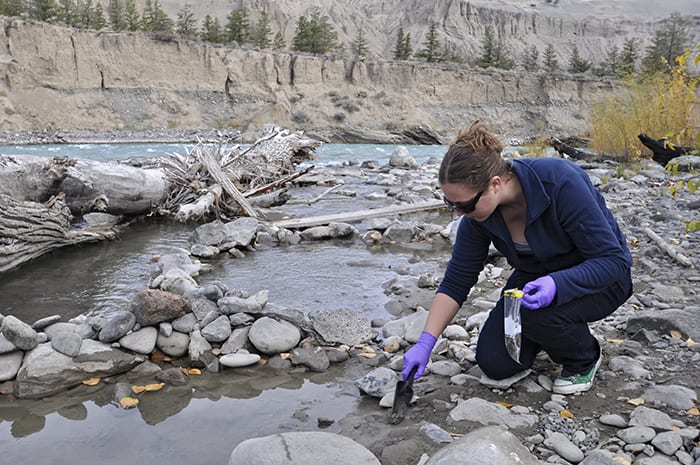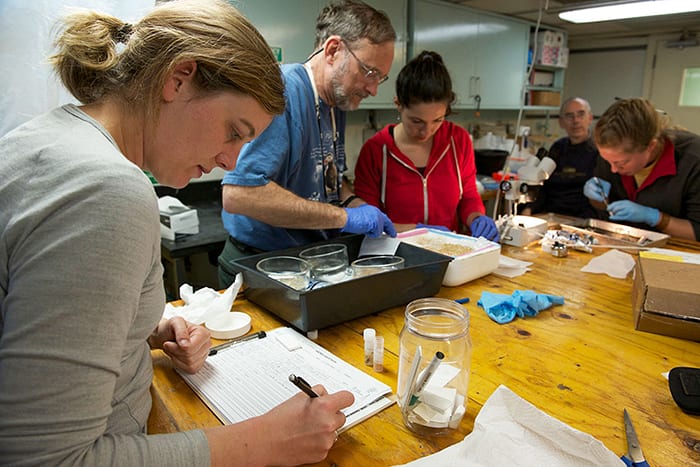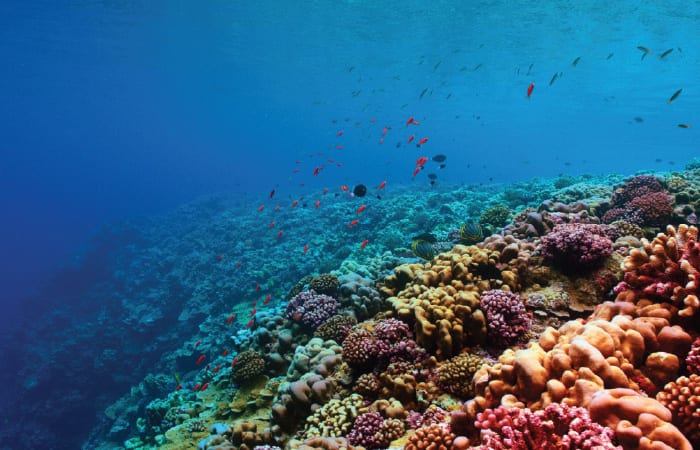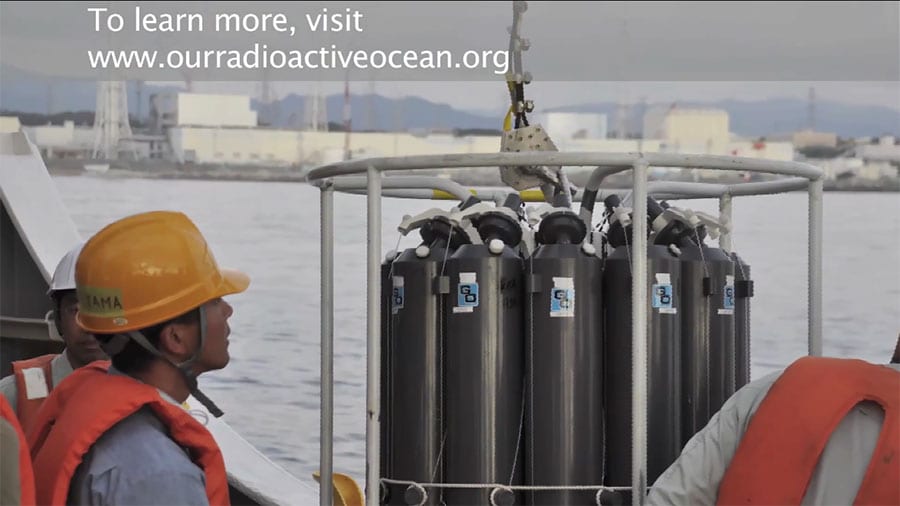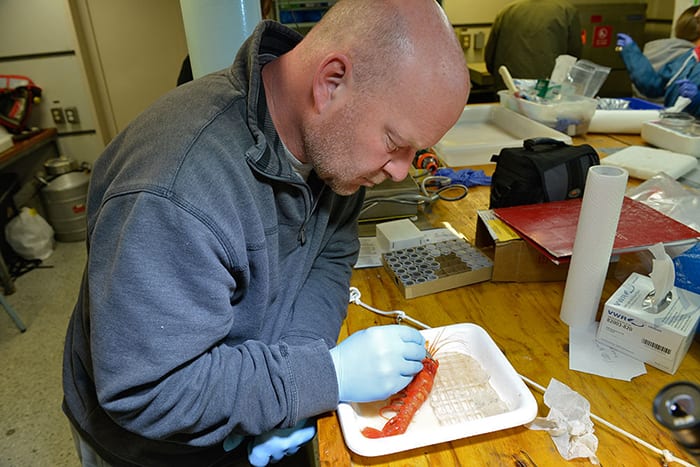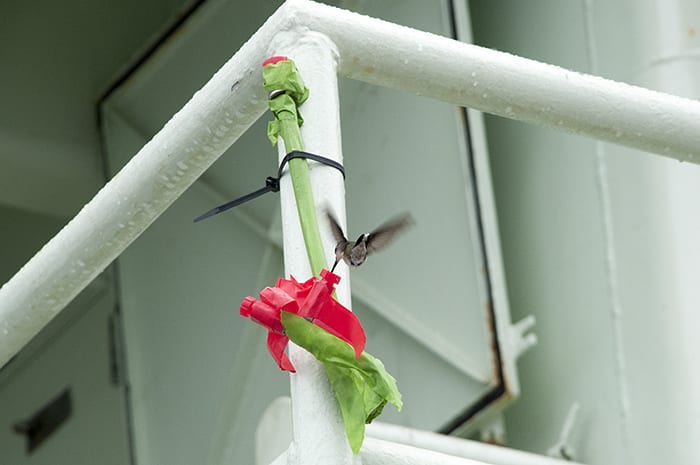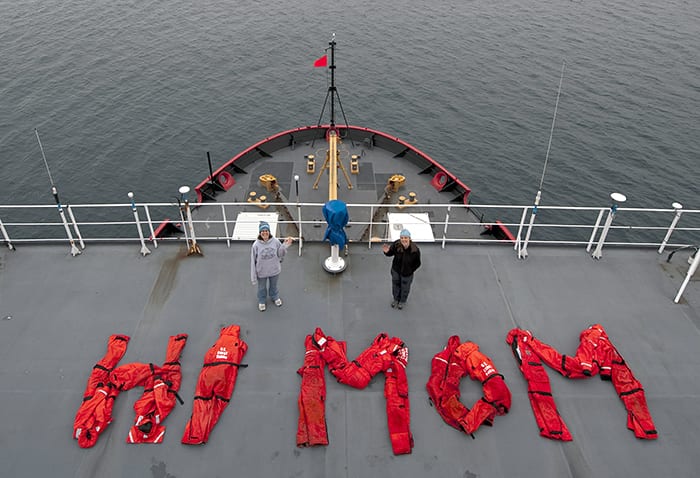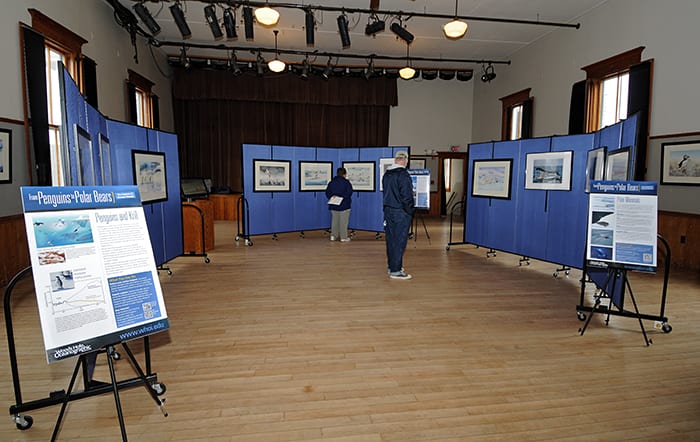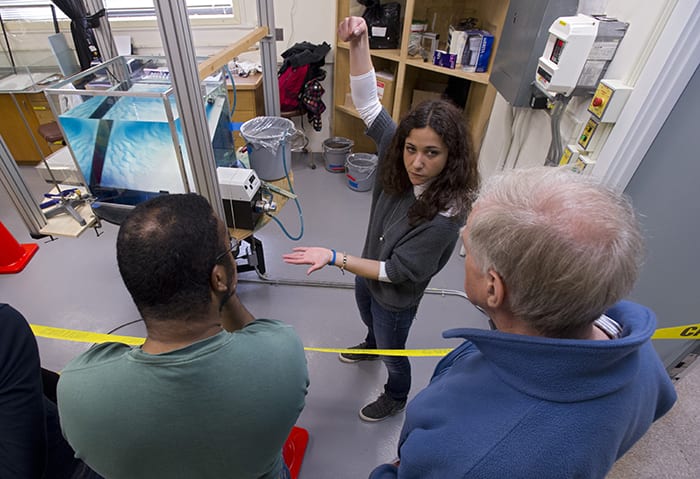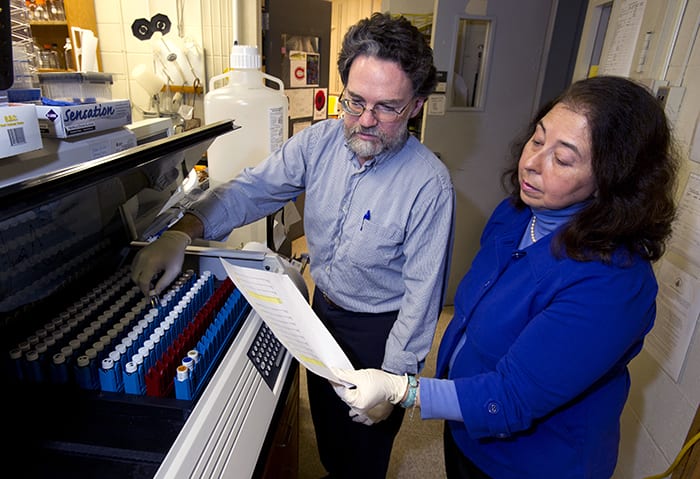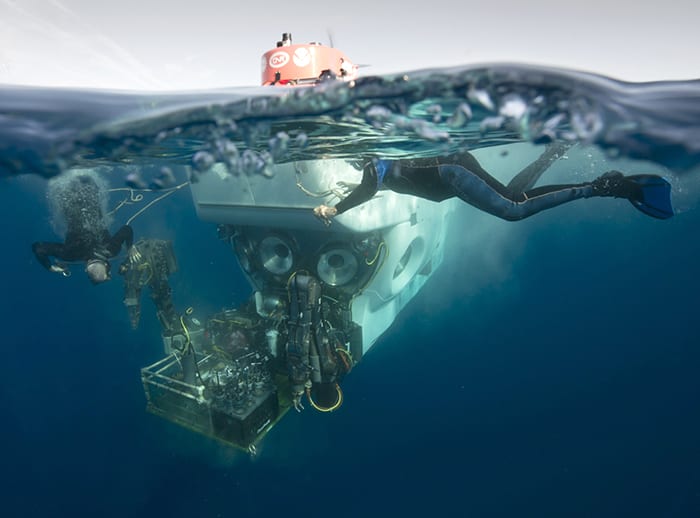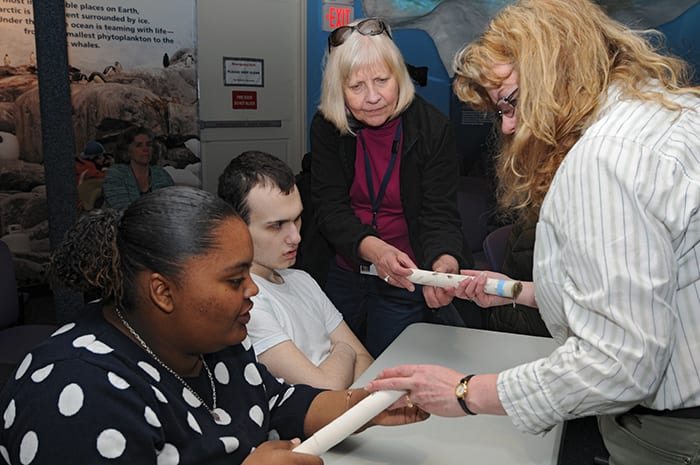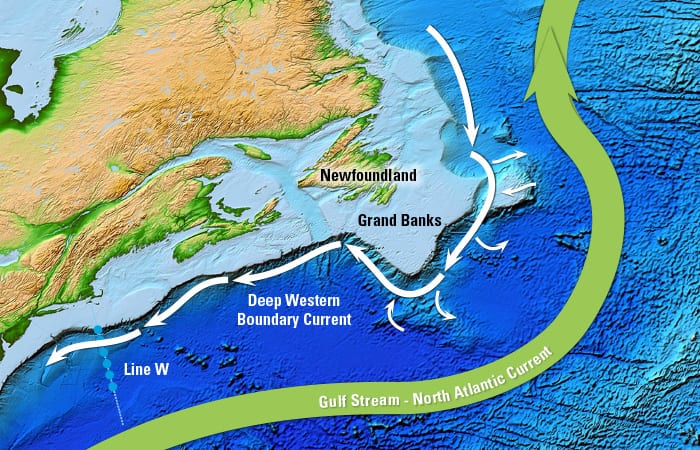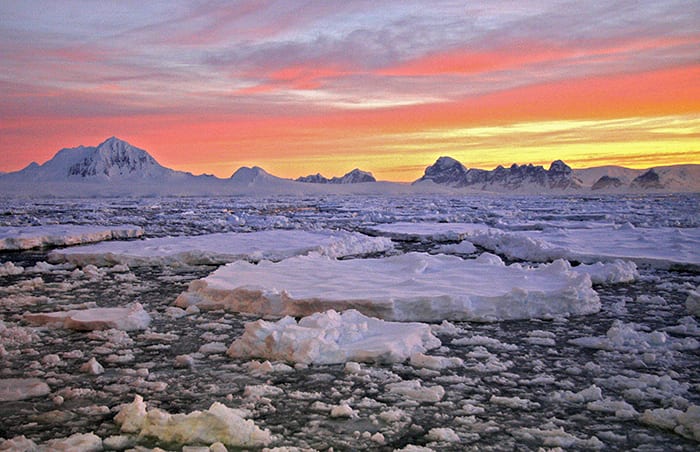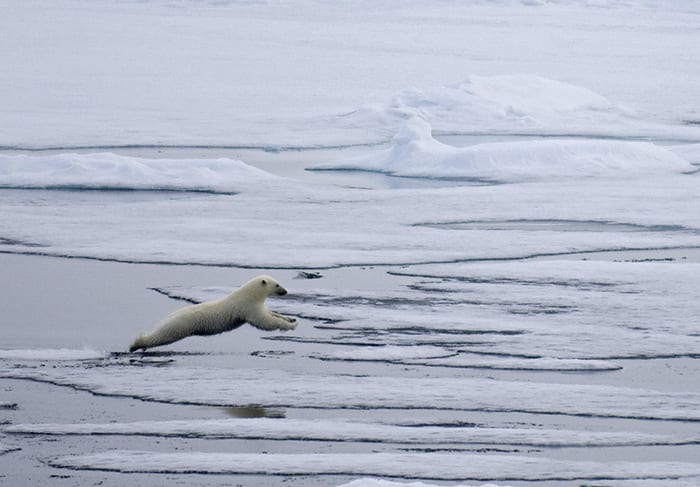Multimedia Items
Superbug from the Deep
A researcher examines a supergiant amphipod (Alicella gigantea), a crustacean brought up in a fish trap from 7,200 meters (nearly 4-1/2 miles) deep in the Kermadec Trench. How this and…
Read MoreMasked Man
The Alvin submersible is equipped with Emergency Breathing Apparatus, or EBAs, and pilots and scientists diving in the sub are scrupulously briefed on how to use them in case of…
Read MoreA Sentry in the Sea
A variety of communication and tracking devices line the top of Sentry, allowing scientists to stay in continuous touch with the nearly 10-foot-long autonomous underwater vehicle. Keeping track of the vehicle…
Read MoreFinal Broadcast
WHOI biologist Tim Shank (front), engineer Casey Machado (behind Shank), and graduate student Santiago Herrera (yellow shirt) view live, high-def video of the deep seafloor during the final dive of…
Read MoreFollow the Birds
Birds ride in the wake of F/V Karen Elizabeth as crew members recover a bottom trawl filled with butterfish at the New England continental shelf edge. Working with fishermen from…
Read MoreBuff Mussels
These deep-sea mussels were collected on an Alvin dive to the Florida Escarpment in the Gulf of Mexico. This rocky platform, 1.6 miles below the surface, is made of long-dead…
Read MoreBack to Work
A crew member on research vessel Thomas G. Thompson signals the crane operator to lower a hadal lander into the water above the Kermadec Trench northeast of New Zealand. The…
Read MoreSupporting the Future of Ocean Science
Thirty-one students from the Joseph P. Keefe Regional Technical High School in Framingham, Mass., got a first-hand look at how scientists use ships to study the ocean during a recent tour…
Read MoreSearching for the Ice Edge
An 11 p.m. sunset reflects off the ice during the Bering Sea Ecosystem Study (BEST) research cruise in 2009. Scientists from WHOI and other institutions across the United States spent 38 days…
Read MoreRiver Mud
MIT-WHOI Joint Program student Britta Voss samples riverbank sediment from the Chilcotin River in British Columbia in October 2010, when low water levels exposed its banks. The Chilcotin, a tributary…
Read MoreTrench Tidbits
Sadie Mills, from the National Institute of Water and Atmospheric Research in New Zealand, keeps track of specimens being prepared by colleagues on the research vessel Thomas G. Thompson. Scientists…
Read MoreSymbiotic Survival
Scientists have long known that corals have symbiotic relationships with algae, called zooxanthellae, which use sunlight to make food for coral animals in exchange for a home. Microbes may also…
Read MoreCrowdsourcing Fukushima
By Ken Kostel :: Originally published online January 1, 2014
Read MoreBig Shrimp
WHOI biologist Tim Shank examines a big shrimp captured in a trap 6,000 meters (about 3.75 miles) below the sea surface. It was collected during an NSF-funded cruise to study…
Read MoreSweet Stowaway
The Gulf of Mexico is not full of flowers. Nor is the WHOI-operated research vessel Atlantis bedecked with gardens. Still, if you are an itinerant hummingbird—migrating perhaps, or blown out…
Read MoreMessage to Mom
During a 2009 Arctic expedition aboard the U.S. Coast Guard Cutter Healy, science writer Helen Fields (left) and technician Megan Bernhardt from the University of Washington arranged a Mother’s Day salute using cold-weather…
Read MoreThe Art of Science
Visitors enjoy an art show that highlights the themes of the recent Woods Hole Oceanographic Institution Morss Colloquium From Penguins to Polar Bears: The Impacts of Climate Change. The related…
Read MoreHow the Fluid Flows
Standing by a rotating tank, guest student Luisa Ottolenghi discusses how water flows down a slope with engineer Chris Lumping (left) and scientist Joseph Pedlosky, in the WHOI Geophysical Fluid…
Read MoreUnlocking the Key
Biologists Mark Hahn and Diana Franks unload samples from a scintillation counter, which measures radioactivity. The WHOI researchers and their colleagues have been working to solve an evolutionary puzzle in…
Read MoreAlvin‘s Basket
When the submersible Alvin ascends from a day’s work at the seafloor, its payload basket in front is usually filled with samples of mud, rocks, or organisms collected by pilots…
Read MoreFragile Corals
As part of an ongoing collaboration, students from the Perkins School for the Blind visited the WHOI Ocean Science Exhibit Center to learn about ocean acidification and its impacts on…
Read MoreOcean Current Detour
The ocean’s global circulation transports heat around the planet, from the equator to the poles, thus regulating Earth’s climate. Two major cogs in this planetary system are the Gulf Stream-North…
Read MoreEndless Sunrise
Doctoral candidate Melissa Patrician captured this stunning sunrise over the Southern Ocean at 1:47 a.m. in late November 2011. With nearly 24 hours of sunlight aboard the R/V Laurence M.…
Read MoreLeaping Polar Bears!
WHOI researcher Chris Linder photographed this polar bear during an expedition in the summer of 2007. Later that year, a research team including WHOI scientist Hal Caswell concluded that melting…
Read More
